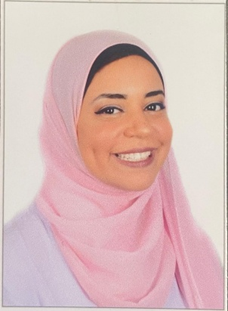Speakers - CARWC2025
Heidi Ashraf Ramadan Rady
- Designation: Department of Plastic & Reconstructive Surgery, Kasr Al-Ainy Faculty of Medicine, Cairo University
- Country: Egypt
- Title: Enhancing Dermal Regeneration with Pelnac® in Deep Dermal Upper Limb Burns: A Novel Technique in a Randomized Controlled Trial
Abstract
Background:
Burn injuries, particularly those affecting large body areas, pose significant clinical and aesthetic challenges due to limited donor sites for autologous skin grafting. Dermal substitutes such as Pelnac® offer a potential solution; however, research on Pelnac use in acute deep dermal burns remains limited. This study evaluates Pelnac® effectiveness in enhancing dermal regeneration, reducing scarring, and improving aesthetic outcomes in upper limb burns. Detailed findings are published in the European Journal of Plastic Surgery (DOI: 10.1007/s00238-025-02273-x).
Methods:
A randomized controlled trial was conducted on 46 patients presenting with acute upper limb burns at Kasr Al-Ainy Cairo University Hospital (March 2021–August 2022). Patients were randomized into two groups: the Graft-Only Group (n = 23) and the Pelnac Group (n = 23). The primary outcome was graft take success rate; secondary outcomes included scar quality (Vancouver Scar Scale), functional recovery (DASH score), and patient-reported satisfaction with aesthetics and function (Smiley Face 1-5 rating).
Results:
In terms of :
●Coverage success, Graft only Group achieved a 100% coverage success rate, while Pelnac took was unsuccessful in the first 17 patients. Upon observing the first successful case, we noted that there was no dermis remaining after excision, prompting us to implement more thorough debridement from the start to reach the subcutaneous fat or fascia. Consequently, the Pelnac coverage was successful in the subsequent four patients, with a 22.7% success rate followed by staged autografting.
•Scar quality: Pelnac® group demonstrated significantly lower VSS scores (2.40 ± 1.52) compared to graft-only group (7.45 ± 1.68, P<0.001).
•Aesthetic satisfaction: Significantly higher in Pelnac® group (P<0.001).
•Functional outcomes: No significant differences between groups (DASH, P>0.05).
Conclusion:
With proper wound bed preparation through thorough initial debridement until reaching a bed of fat or fascia, without leaving residual dermis, Pelnac represents a promising approach for personalized dermal regeneration in acute deep dermal burns. Beyond serving as a protective cover for the wound bed, it reduces scarring and enhances aesthetic outcomes, bridging reconstructive and cosmetic considerations. Full details and analysis of this study are accessible in the European Journal of Plastic Surgery (DOI: https://doi.org/10.1007/s00238-025-02273-x).


